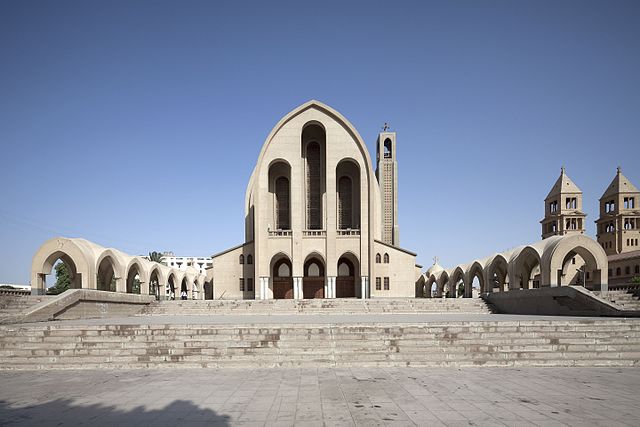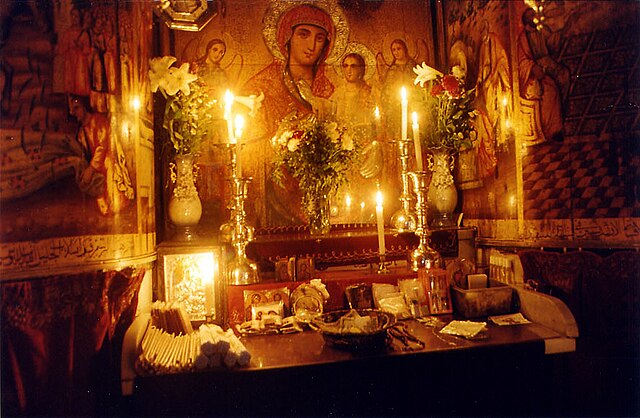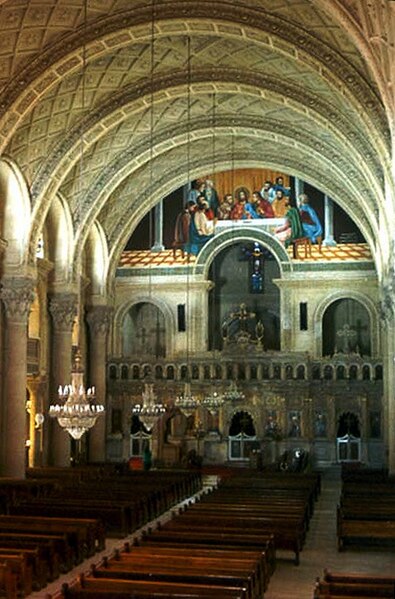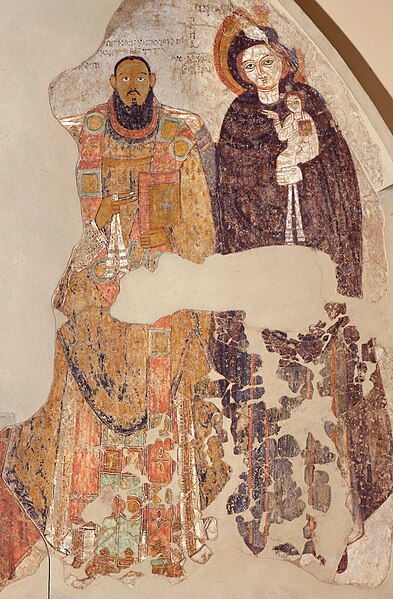Coptic art is the Christian art of the Byzantine-Greco-Roman Egypt and of Coptic Christian Churches. Coptic art is best known for its wall-paintings, textiles, illuminated manuscripts, and metalwork, much of which survives in monasteries and churches. The artwork is often functional, as little distinction was drawn between artistry and craftsmanship, and includes tunics and tombstones as well as portraits of saints.
The Coptic Museum in Coptic Cairo houses some of the world's most important examples of Coptic art.
Christ and Saint Menas, 6th-century Coptic icon, Louvre
Figurative capital, Coptic Museum, Cairo.
Rondel, wool on linen, 6th century, Syrian or Egyptian Coptic. Cooper Union museum.
Tunic ornament, wool, tapestry weave, 10th century. California Academy of Sciences collections.
The Coptic Orthodox Church, also known as the Coptic Orthodox Patriarchate of Alexandria, is an Oriental Orthodox Christian church based in Egypt. The head of the church and the See of Alexandria is the pope of Alexandria on the Holy Apostolic See of Saint Mark, who also carries the title of Father of fathers, Shepherd of shepherds, Ecumenical Judge and the 13th among the Apostles. The See of Alexandria is titular. The Coptic pope presides from Saint Mark's Coptic Orthodox Cathedral in the Abbassia District in Cairo. The church follows the Coptic Rite for its liturgy, prayer and devotional patrimony. Adherents of the Coptic Orthodox Church make up Egypt's largest and most significant minority population, and the largest population of Christians in the Middle East and North Africa (MENA). They make up the largest percentage of approximately 20 million Christians in Egypt.
Saint Mark's Coptic Orthodox Cathedral, Cairo, Egypt
Coptic Icon in the Coptic Altar of the Church of the Holy Sepulchre, Jerusalem
St. Mark Coptic Cathedral in Alexandria
Makurian wall painting depicting a Nubian bishop and Virgin Mary (11th century)








